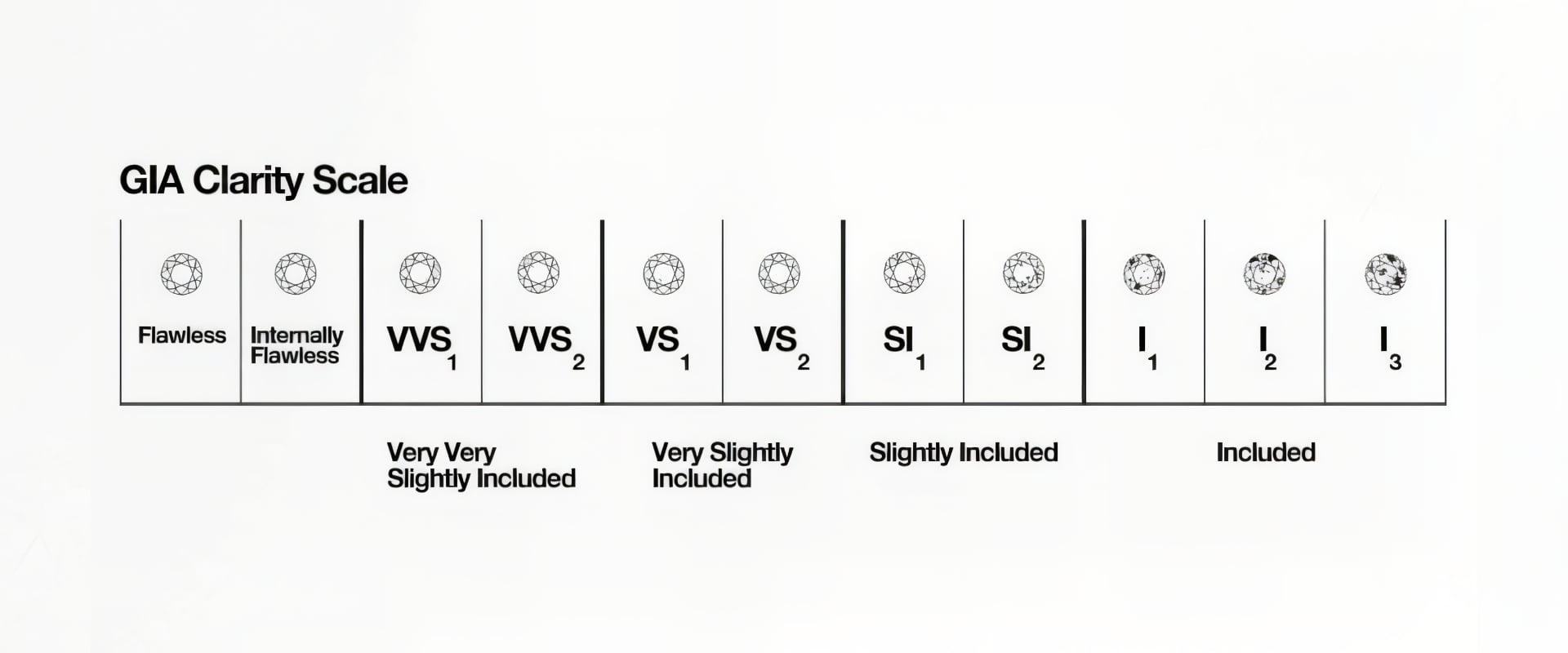The 5Cs of Diamonds
At Hatton Jewels, we believe Diamonds should speak to you, not just through its technical details, but through its beauty and the way it makes you feel.

Your Guide to Diamond Grading
When embarking on your journey to buy the perfect Diamond, there is a world of knowledge to try to take in. We have put together a simple guide to Diamond grading, so that you can confidently choose the perfect Diamond.
This guide is here to help you find understanding in the terms used for Diamonds and the distinctions of the grading classifications.
Carat

What is a Carat?
The term ‘carat’ originates from the word ‘carob’. In ancient times, carob seeds, known for their remarkably consistent weight of about 0.20 grams, were used by gem traders to balance their scales when measuring gemstones.
Diamond weight is measured in carats, with one carat (1.00ct) equal to 200 milligrams, or 0.2 grams.
You might come across terms like 'half carat' (0.50ct), '20 points' (0.20ct), and '1 carat' (1.00ct), where each 'point' represents one hundredth of a carat.

Carat vs Size
Many companies list only a diamond’s weight, as it's commonly used to indicate size. However, it's important to view the actual measurements, as appearance can vary.
For example, a well-cut 1.00ct round diamond typically measures about 6.5mm in diameter, but a deeper-cut stone may measure only 6.2mm while still weighing 1.00ct. Though both weigh the same, one will appear smaller—and this can also impact price.
Cut

Diamond Cut Grading
Diamond cut refers to how well a diamond has been shaped and faceted from its rough form, not to be confused with its shape (like round or oval).
Diamond cut grading is typically based on three key factors: Cut, Polish, and Symmetry.

The Anatomy of Diamonds
For round Diamonds, the cut grade is determined using precise measurements of the table, girdle, facets, and angles.
These measurements, along with visual assessments of brightness, fire, and scintillation, evaluate how well the diamond reflects light and sparkles. The cut is then graded on a five point scale; Poor, Fair, Good, Very Good or Excellent.
It’s important to note that only round diamonds receive a full cut grade. Fancy shapes (like oval or pear) are evaluated only for symmetry and polish.
Symmetry and Polish
Colour

What Diamond Colour Really Means
The colour you choose for your diamond ultimately comes down to personal preference and what you find most visually appealing.
The colour grading scale for 'white' diamonds ranges from D to Z, with each letter indicating how colourless the diamond appears. These grades are grouped into categories to help you understand the level of colour present in each stone
Colour Grading Scale
Clarity

Understanding Diamond Clarity
Diamond clarity measures the inclusions and blemishes inside and on the surface of a diamond, natural features formed deep within the Earth.
These unique characteristics can be used as identification markers in a stone, particularly with rare and unusual inclusions.
Clarity is graded on a GIA scale from Flawless (FL) to Included (I3), based on size, type, location, and visibility of inclusions under 10x magnification.
While many inclusions are microscopic, clarity grades reflect their overall impact on the diamond’s appearance.
Clarity Grading Scale
Charm

The Fifth C
A Diamonds charm goes beyond the technical details of cut, clarity, colour, and carat. It’s the intangible quality that makes a diamond truly captivating and emotionally meaningful.
We believe the charm of a Diamond is just as important as its technical qualities. How it catches and reflects light, is a big part of its beauty. Your Diamond should bring you joy every time you see and wear it.
Every Diamond is a unique masterpiece of nature, formed deep within the earth, shaped by intense heat and pressure over millions of years, and finally cut and polished into a sparkling stone to be adored.
A Diamond’s unique combination of carat weight, cut, colour, and clarity come together to create a captivating scintillation that draws you in. It should enchant you with its beauty and charm, something intangible that you can’t quite explain. For centuries, diamonds have symbolised love, a timeless treasure that will always be a part of your story.


